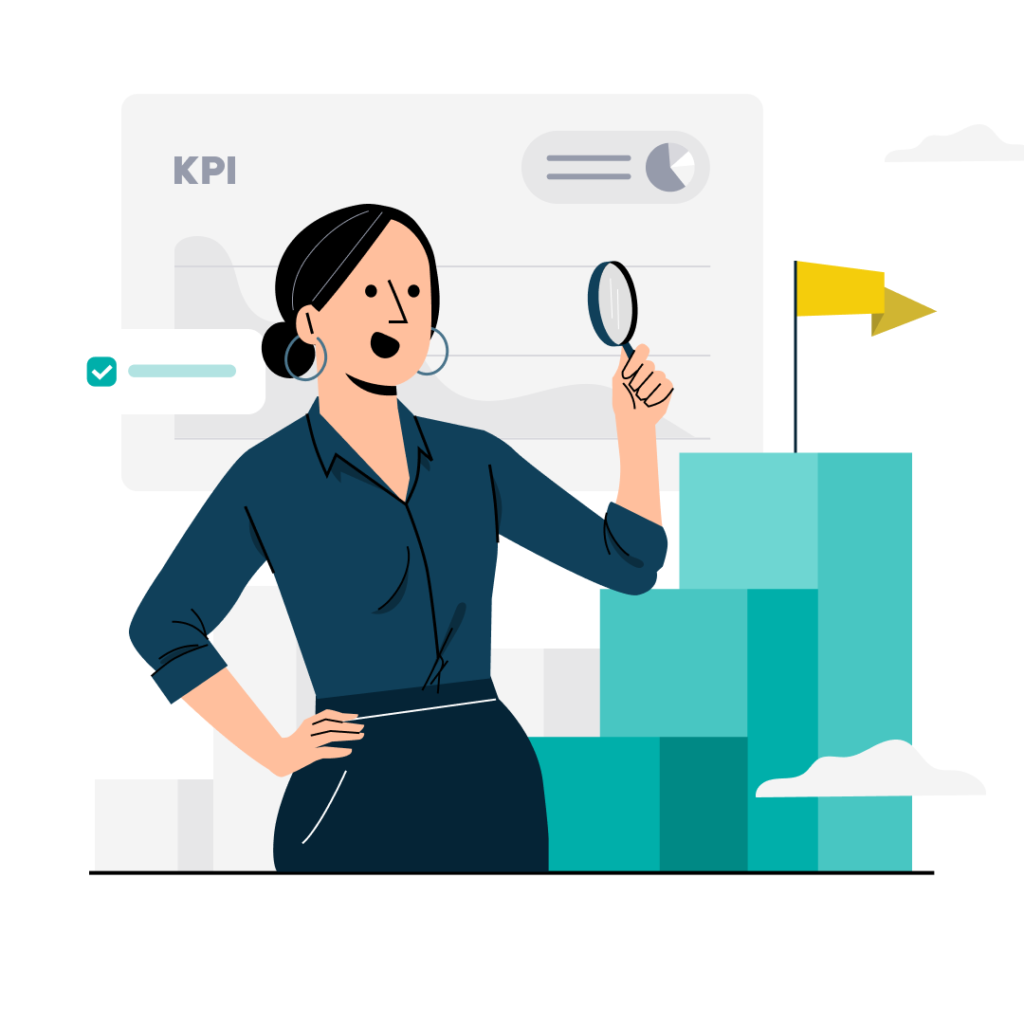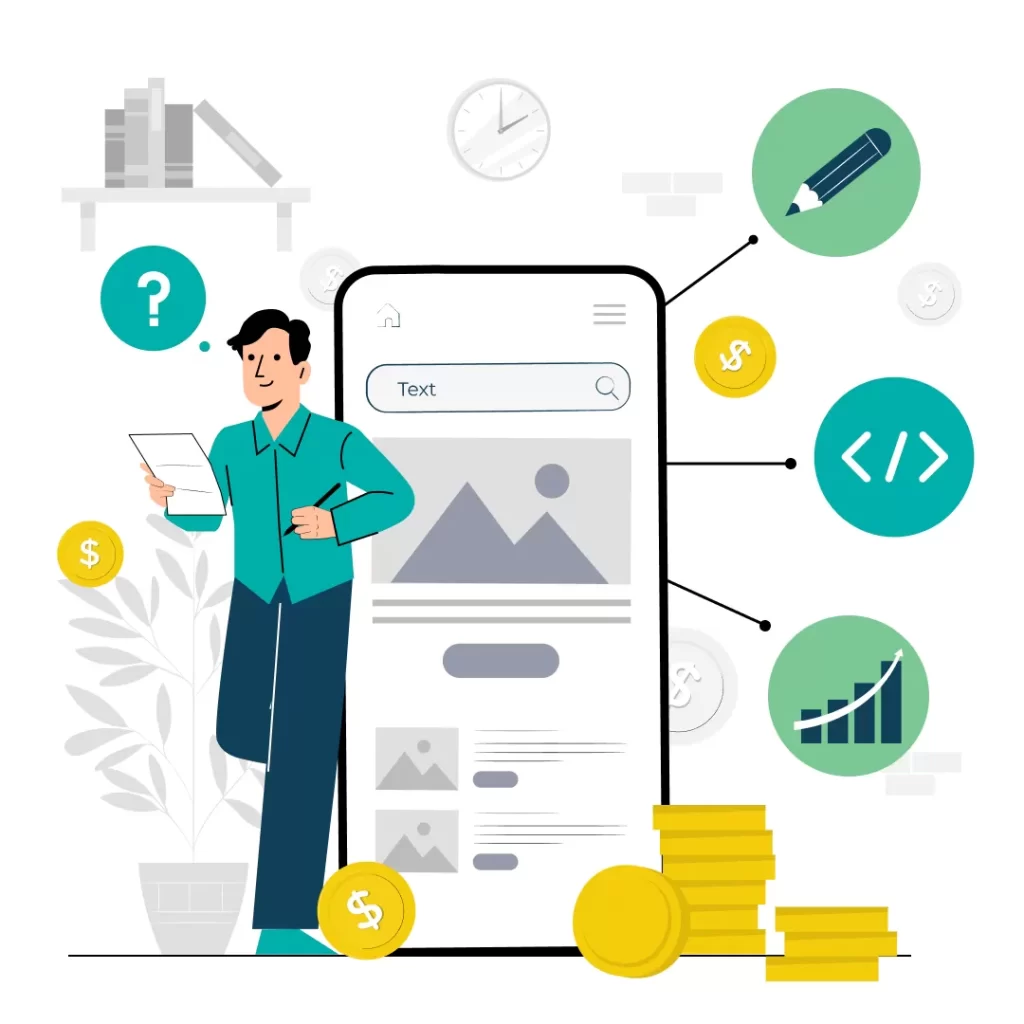When it comes to web and app projects, success is not solely determined by meeting deadlines and adhering to budgets. While these factors are undoubtedly important, the true measure of success lies in delivering tangible value that positively impacts your business. This is where Key Performance Indicators (KPIs) play a crucial role.
KPIs are not merely figures on a spreadsheet; they are the vital signs of your project. They provide a clear indication of whether you are progressing as planned or deviating from your intended course. KPIs serve as a guiding light for your decisions, ensuring that you remain focused on the most critical aspects of your project.
In this article, we will cover the importance of setting and tracking KPIs for web and app projects. We will explore a case study of Conferensity, a B2B event management platform, to illustrate how aligning KPIs with strategic goals can drive success.
Additionally, we will discuss the process of identifying the right KPIs, tools and techniques for effective tracking, and the significance of analysing and reporting on these metrics. By the end of this article, you will have a comprehensive understanding of how to prioritise success in your web and app projects through the disciplined application of KPIs.
Conferensity: A Case Study in KPI Alignment
To illustrate the importance of KPIs, let’s consider Conferensity, a B2B event management platform with aspirations to become a comprehensive conference solution.
Their strategy involves expanding their web-based software’s capabilities and developing two apps – one for conference admins and another for attendees.
While these are three digital products, 1 website and 2 apps, there is actually a fourth project – the updated backend that will implement the features the website and apps will provide interfaces for. This backend will also require extensive work to provide all the necessary admin features to manage the new frontend features. By dedicating their resources to these four digital projects Conferensity is actively working towards achieving their primary business objective.
Here is some of what they want their products to do:
- manage venue communication and arrangements (such as contracts, venue layout, and extra services like conference Wi-Fi, local tours, etc), and
- handle communication with speakers, panel members, and guests (including contracts, accommodation, presentation reservations, and travel).
- provide opportunities to make purchases through the app for everything from refreshments to accommodation and perhaps one day flights
Their first app will be for conference admins, duplicating the client-accessible website’s functionality. The second app, designed for attendees, will allow attendees to reserve seats, purchase tickets to the conference, and pay for any related services, purchase refreshments and merchandise. It will also have features like schedules and venue maps, presentation start reminders, live questions via chat rooms, presentation feedback, and special features for speakers.
Their strategy encompasses a website overhaul and the launch of two apps—one for conference admins and another for attendees—supported by a robust backend system. The success of these digital projects is critical to achieving their goal of increased market share and revenue.
Identifying the Right KPIs
When it comes to selecting KPIs for web and app projects, businesses must consider a wide range of metrics that cover various aspects of their operations. These KPIs can be broadly categorised into financial, customer, operational, and product-related metrics.
Financial KPIs, such as Monthly Recurring Revenue (MRR), Annual Recurring Revenue (ARR), and Customer Lifetime Value (CLV), provide insights into the financial health and growth potential of the business. These metrics help in making informed decisions about resource allocation, pricing strategies, and long-term financial planning.
Customer-related KPIs, including Customer Acquisition Cost (CAC), Churn Rate, Customer Retention Rate, and Net Promoter Score (NPS), focus on understanding the effectiveness of customer acquisition and retention strategies. These metrics help businesses identify areas for improvement in customer experience and loyalty.
Operational KPIs, such as Support Ticket Volume and Resolution Time, Code Deployment Frequency, and Server Uptime/Downtime, measure the efficiency and effectiveness of internal processes. These metrics are crucial for ensuring smooth operations and delivering high-quality services to customers.
Product-related KPIs, including Active Users (Daily/Monthly), User Engagement Score, Feature Usage Rate, and Product Stickiness (DAU/MAU Ratio), provide valuable insights into how users interact with the product. These metrics help in making data-driven decisions about product development, user experience improvements, and feature prioritisation.
For Conferensity, a B2B event management platform, the most relevant KPIs would likely include:
- Client Satisfaction Score (CSAT): Measuring the satisfaction levels of event organisers using the platform is crucial for retaining clients and attracting new ones through positive word-of-mouth.
- Platform Usage Metrics (Active Users, Session Duration): Monitoring user engagement helps identify areas for improvement in the user experience and ensures that the platform is delivering value to its users.
- Ticket Sales Conversion Rate: As a key revenue driver, tracking the percentage of app users who purchase tickets is essential for optimising the sales funnel and increasing revenue.
- Revenue Generated from Transaction Fees: This metric directly impacts the financial performance of the business and helps in making decisions about pricing and revenue growth strategies.
- Churn Rate of Event Organisers: Minimising the churn rate of event organisers is crucial for maintaining a stable revenue stream and ensuring the long-term success of the platform.
By focusing on these key metrics, Conferensity can make data-driven decisions that align with its strategic goals and drive the success of its web and app projects.
Tools and Techniques for Tracking KPIs
Tracking KPIs effectively requires a combination of tools and techniques tailored to specific metrics.
For financial KPIs like MRR, ARR, and CLV, businesses often rely on financial software such as Xero, QuickBooks, or NetSuite.
These tools can be integrated with billing and subscription management platforms like Chargebee or Recurly to automate revenue tracking and reporting.
Customer-related KPIs, including CAC, Churn Rate, and NPS, can be tracked using CRM systems like Salesforce, HubSpot, or Pipedrive, and pro-actively managed using services like ChurnZero, Totango and GainSight.
These platforms allow businesses to manage customer interactions, monitor customer health, and analyse customer feedback.
Specialised tools like Delighted or Promoter.io can be used to collect and analyse NPS data.
For operational KPIs, such as Support Ticket Volume and Resolution Time, tools like Zendesk, Freshdesk, or Jira Service Desk are commonly used.
These platforms help streamline support processes, track ticket metrics, and generate performance reports.
For monitoring Code Deployment Frequency and Server Uptime/Downtime, businesses may use tools like New Relic, Datadog, or Pingdom.
Product-related KPIs, such as Active Users, User Engagement Score, and Feature Usage Rate, can be tracked using product analytics platforms like Mixpanel, Amplitude, or Heap.
These tools require instrumenting the app or website to send user interaction data to the analytics platform. This data is then processed and visualised in dashboards and reports, enabling businesses to gain insights into user behaviour and product performance.
In the case of Conferensity, they would likely use the following tools and techniques to track their key KPIs:
- Client Satisfaction Score (CSAT): Use a survey tool like SurveyMonkey or Typeform to collect feedback from event organisers after each event. Analyse the data in a BI tool like Tableau or Looker.
- Platform Usage Metrics: Implement product analytics using Mixpanel or Amplitude to track user engagement, session duration, and feature usage within the web platform and mobile apps.
- Ticket Sales Conversion Rate: Use Google Analytics to track the ticket sales funnel on the website. For in-app purchases, use mobile app analytics tools like Mixpanel, Amplitude, or Heap.
- Revenue Generated from Transaction Fees: Integrate the payment gateway (e.g., Stripe or Braintree) with the financial software (e.g., Xero or QuickBooks) to track transaction fees and revenue.
- Churn Rate of Event Organisers: Monitor client churn using a CRM system like Salesforce or HubSpot along with a service like Totango. Analyse churn data in a BI tool to identify trends and risk factors.
Analysing and Reporting on KPIs
Tracking is only the beginning. The real value comes from analysing the data to gain insights and making informed decisions. Services like Tableau or Microsoft Power BI or Google Looker can transform raw data into actionable intelligence. Regular reporting is crucial, but the frequency and format may vary depending on the KPI and its significance to the business.
For critical KPIs like revenue, customer acquisition, and churn rate, companies often opt for real-time dashboards that provide a constant pulse on performance. This allows decision-makers to quickly identify and respond to any deviations from the expected trajectory.
Other KPIs, such as customer satisfaction scores or feature usage rates, may be reviewed on a weekly or monthly basis, as they tend to change more gradually. These periodic reviews provide an opportunity for deeper analysis and strategic planning.
Many companies adopt a multi-tiered approach to KPI reporting. Operational teams may review granular metrics daily or weekly to optimise their processes, while executive teams focus on high-level KPIs in monthly or quarterly business reviews. This ensures that insights are communicated effectively across the organisation and that each level can take appropriate actions.
To maximise the impact of KPI insights, you need to build a culture of data-driven decision-making. This involves providing training and resources to help your employees interpret and act on KPI data. Regular cross-functional meetings, where teams share their KPI learnings and collaborate on improvement strategies, can also be highly effective.
The optimal reporting cadence and review process will depend on the unique needs and goals of your business. The key is to strike a balance between timely action and thoughtful strategic planning, ensuring that KPI insights are consistently translated into meaningful business outcomes.
Implementing KPIs in Your Business
Incorporating KPIs into your business strategy is a process that requires careful planning and execution. Here are some key steps to help you effectively implement KPIs:
- Define Clear KPIs: Start with a broad list of applicable KPIs and refine it based on your specific business goals.
- Select the Right Tools: Choose tracking and analysis tools that integrate well with your existing systems and provide the insights you need.
- Set Realistic Targets: Establish benchmarks that are ambitious yet achievable, considering your resources and market conditions.
- Regularly Review and Adapt: Use the data to make informed decisions, and don’t be afraid to revise your KPIs as your projects and markets evolve.
Wrapping it all up
For Conferensity, and any business investing in digital growth, the disciplined application of KPIs is not optional – it’s a cornerstone of strategic decision-making. By setting, tracking, and analysing the right KPIs, you ensure that every step you take is a step toward success.












